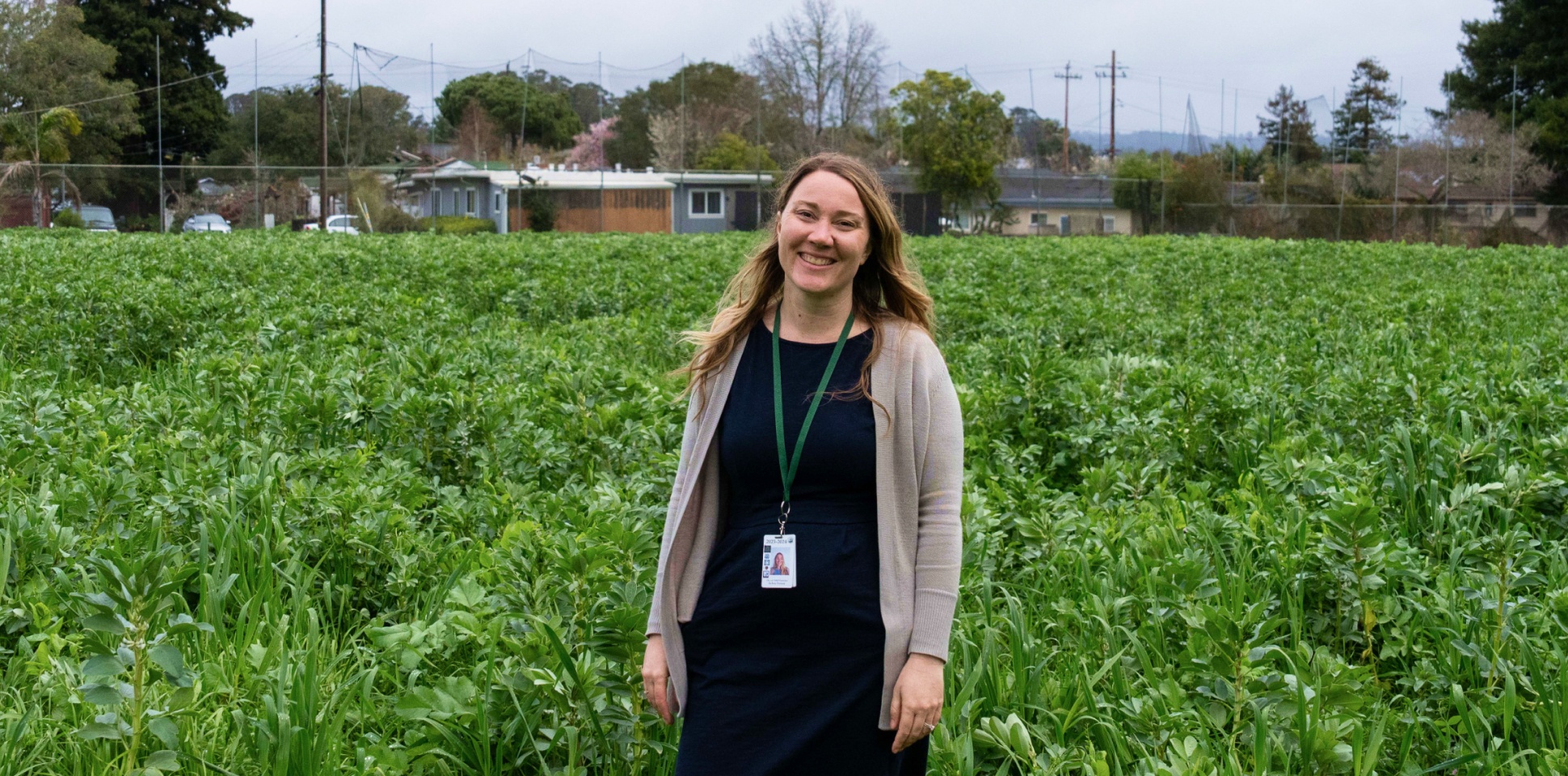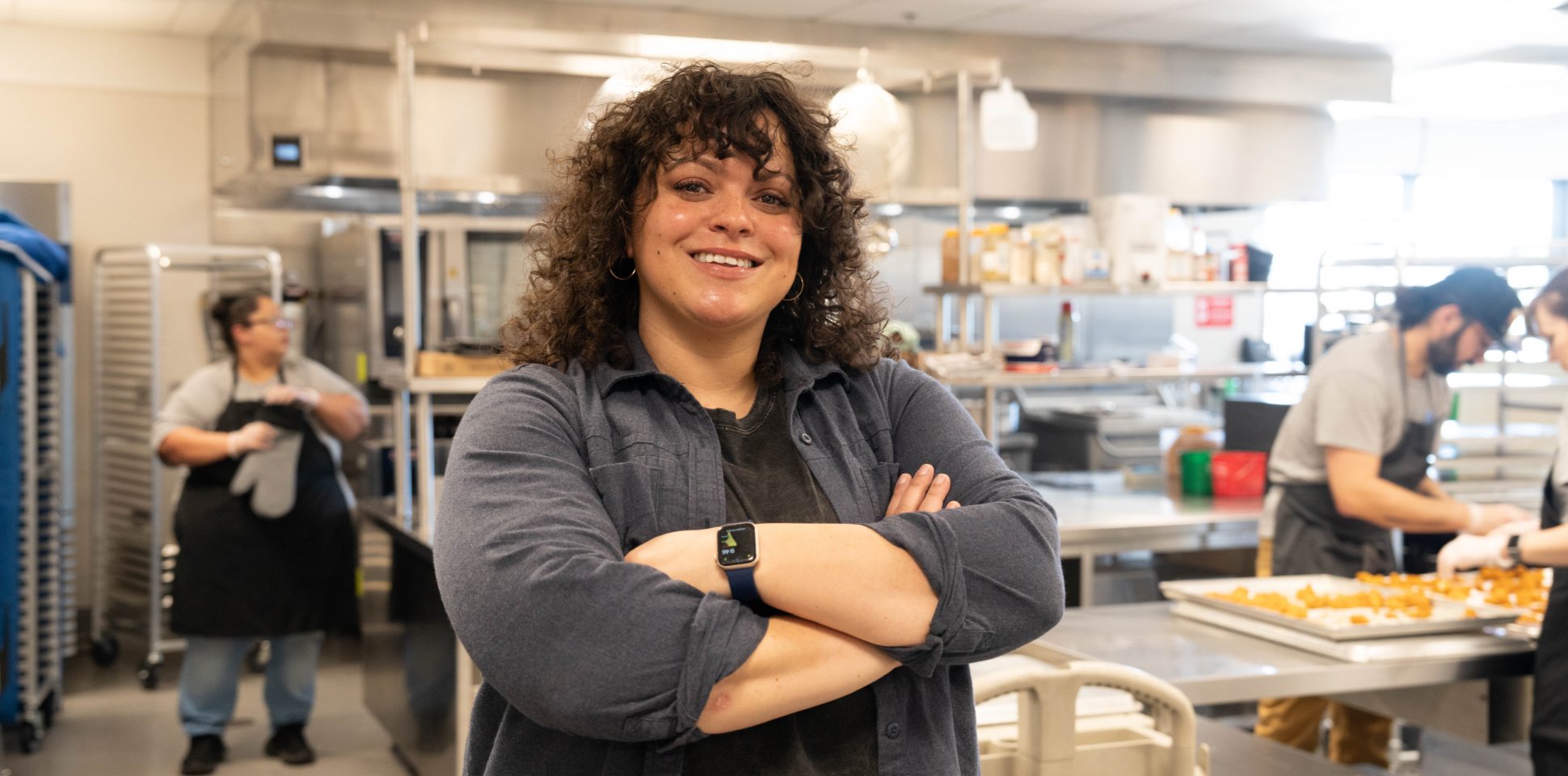You have to be quick on your feet if you want to grab a muffin at the Del Mar Elementary School cafeteria in Santa Cruz, California, because they go fast. The popular whole grain muffins are the special recipe of Prep Cook Nancy Gonzalez.
“I bake them at home, and my daughters would always tell me ‘You should make these at school, so all our friends can try them,’” Nancy said.
Nancy’s daughters were right—the muffins were a hit among students. Now they are one of the many delicious recipes served weekly to students in Live Oak School District.
Starting from Scratch
In Live Oak’s central kitchen at Del Mar Elementary, School Food Professionals are creating a new vision of what a school food program can be — one where fresh, locally grown ingredients, scratch-cooked meals and hands-on culinary education for students are the norm.
Live Oak’s innovative school food program features healthy scratch-cooked meals, packed with flavors kids love and provided to more than a thousand students every school day. Led by Kelsey Perusse, a registered dietitian and the Director of Child Nutrition Services, the district’s team of School Food Professionals are redefining what school food can be, bringing in good and good-for-you recipes, diverse perspectives and new approaches to preparing and cooking student meals.
“We’re trying to do incredible, innovative things,” Kelsey said. “Part of the way to do that is to have a strong, innovative team of School Food Professionals who are passionate about that work.”
Hands-on Experience and Opportunities for Learning
For students to build lifelong healthy eating habits, it’s important for them to understand where their food comes from and how to make their own delicious and nutritious meals.
At Live Oak, students get the chance to follow their food from seed to tray. In partnership with local nonprofit Life Lab, Live Oak runs an agriculture education program that gets students involved in the farming process — planting, growing and harvesting crops, and bringing them to the district’s central kitchen. Back in the central kitchen, Live Oak’s Food Lab program gives students hands-on experience, helping to transform that produce into fresh and tasty meals for their classmates.
One recipe that came from the garden-to-cafeteria partnership was a kale pesto. In March 2024, Live Oak had an abundance of kale in the gardens. So, students got creative and turned that harvest of kale into a flavorful pesto sauce that was then used to make two delicious lunch entrées: kale pesto pasta and freshly baked kale pizza.
“We encourage kids to find out about nutrition and develop their culinary skills at a young age,” said Yumery Salazar Rivas, who works in Live Oak’s Child Nutrition Services department. “They get to learn scratch cooking in a real kitchen, and they produce enough food for all our school sites.”
Enabling kids to learn how to cook and design new meals has been a great educational experience. And it has helped the district more successfully align their menu offerings with the tastes, preferences and cultural backgrounds of their students. After all, kids know their taste buds best! And by using local produce and minimally-processed ingredients as the foundation of school menus, School Food Professionals are helping students create healthy eating habits for life.
Seeing students take part in making meals that reflect who they are is one of the things that Yumery loves most about the program. “Kids are helping our School Food Professionals make scratch-cooked enchiladas and other great meals for their fellow students,” she said. “That’s something I definitely didn’t see on the menu when I was a kid.”
Fresh, Healthy and Local
Through committing to healthier meals, Live Oak’s team is also building a healthier community. By buying from local farms and producers, they’re able to get the freshest possible ingredients while supporting local Santa Cruz businesses.
Live Oak’s team prioritizes getting to know their farmers. Many of the farmers they buy from are supported by the Agriculture and Land-Based Training Association, a local nonprofit that helps people create and run their own organic farms, and the district supports a wide range of other local producers.
“We get squash, kale and peppers from Brisa Ranch in Pescadero and apples from Billy Bob Orchard in Watsonville,” said Kelsey. “And our beef comes from Richard’s Regenerative Ranch up in Lafayette.”
Cooking Up Something Special
The kitchens at Live Oak School District are making more than just great meals. Their team of School Food Professionals is creating a model for a new kind of school food program while cultivating healthier futures for kids and communities. And it’s a team they’re proud to be a part of.
Nancy has been offered other positions in the school, but she always turns them down. Being in the school kitchen, cooking delicious meals for students, is where she wants to be. The students agree.
“They’re always calling for me, ‘Nancy! Nancy!,’” she said. “They always say ‘I know you cooked this, because it’s so delicious.’”
To learn more about how Live Oak School District is cooking up healthy meals and futures for their students, follow them on Instagram @LiveOakSDNutrition.

